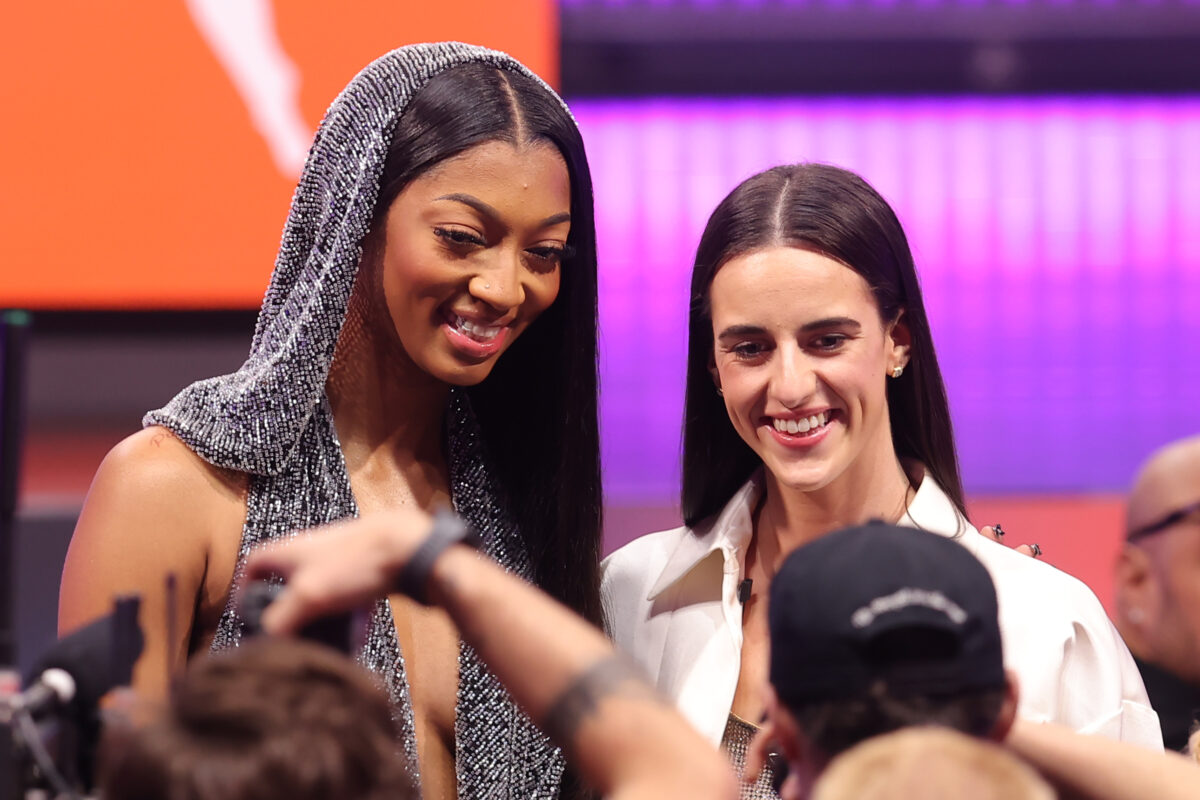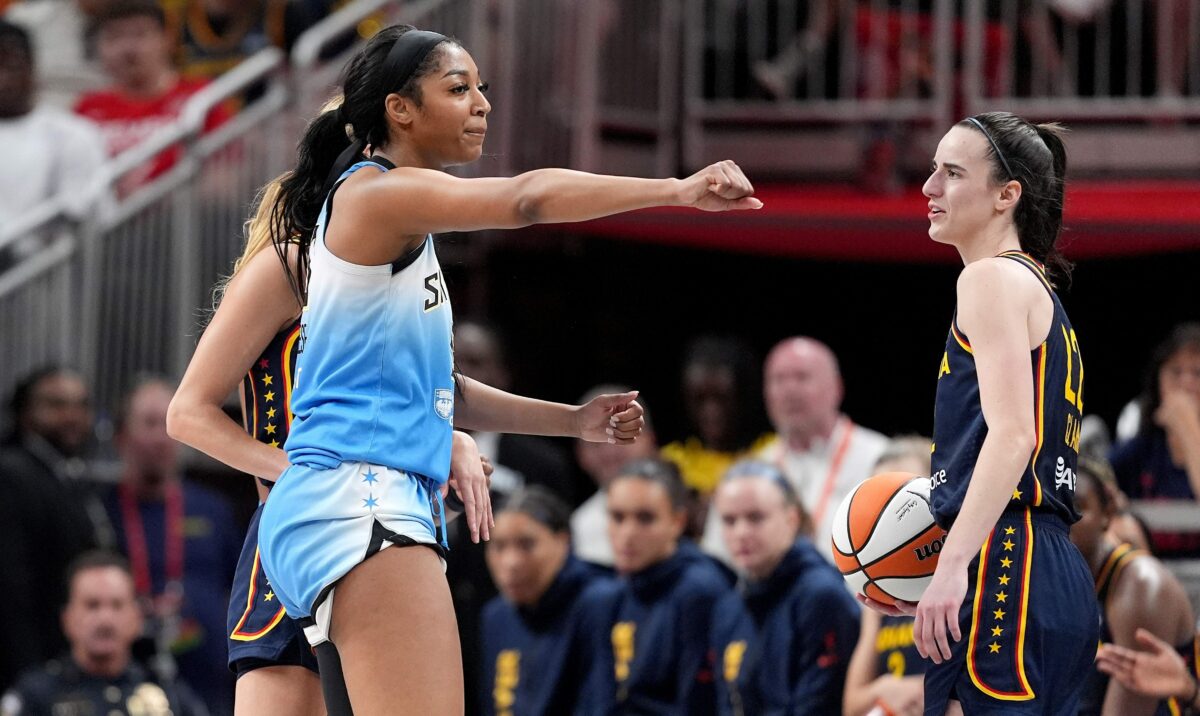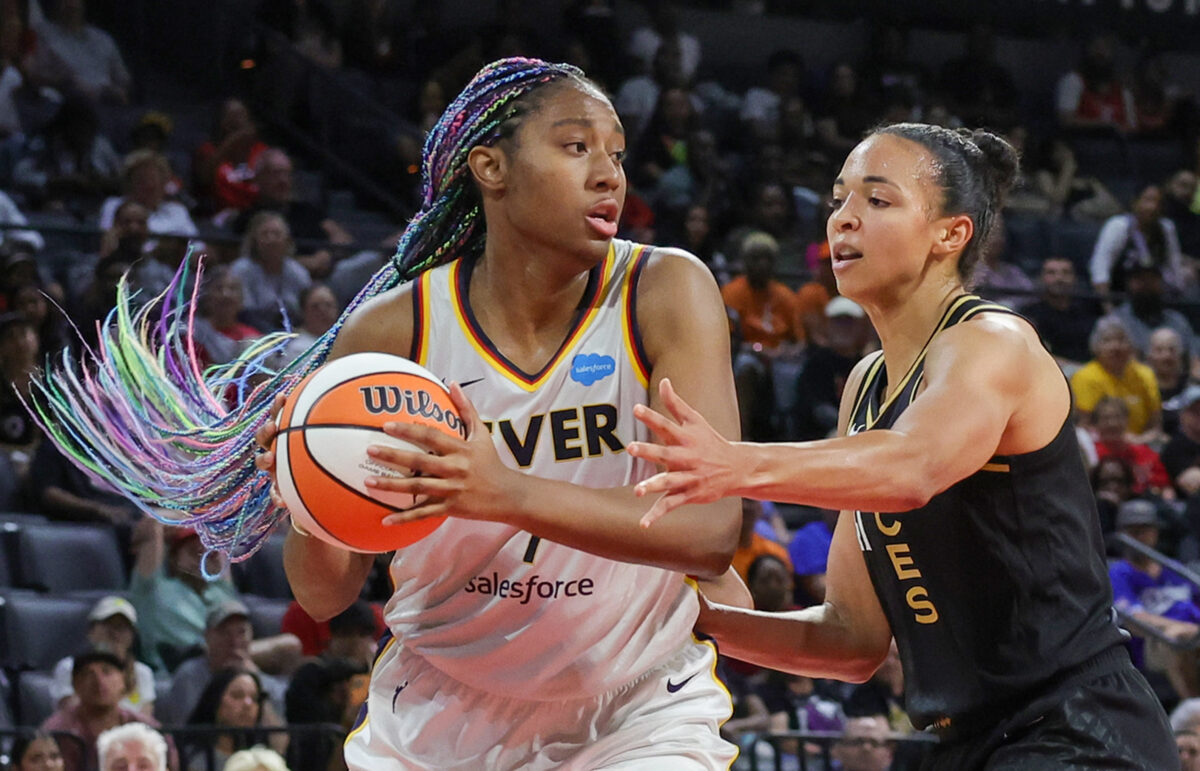Led by former collegiate rivals Angel Reese and Caitlin Clark, this is a particularly special group of rookies in the WNBA.
As we approach the upcoming WNBA All-Star Game, where the two will play alongside one another, we have some time to sit back and reflect on what these two have accomplished at this point in their professional careers.
Not only have the players helped grow the game in incredible ways with countless new fans from around the world, but they have both impressed on the court as well. They are both worth turning on the TV whenever they have games scheduled.
Clark (-1200) is currently the heavy favorite to win the 2024 WNBA Rookie of the Year, per BetMGM. Her heavy implied probability suggests that it is unlikely anyone else gets the award.
But is that a disservice to Reese, an underdog (+650) whose implied probability suggests she is still a legitimate candidate?
The Rookie of the Year campaigns for Clark and Reese
While there is a lot of intrigue around the WNBA’s Rookie of the Year this season, many fans and media members may hold some form of biases based on preconceived notions of Reese and Clark.
So we wanted to bring some numbers into the mix using advanced stats known as catch-all or all-in-one metrics. These are basically a single number that attempts to evaluate, on various scales, the success of a basketball player on a court.
It’s sort of like the film (and book!) Moneyball but for the hardwood.
The WNBA’s Rookie of the Year isn’t just based on stats, of course, or the league would have the decision made by a machine. Evaluators have several factors to consider, but the numbers can and should play a role.
Based on the advanced analytics made evaluable to us, similar to what we have done in the NBA, we created a bit of a rudimentary model that could help make a determination.
I’ve written about these stats in the NBA and they’re very useful and worth citing during player evaluations. But they do have shortcomings worth noting. For example, one particularly relevant note is that post players tend to perform better than high-usage guards due to efficiency.
We can look back at these scores later in the season to track progress.
RELATED: Caitlin Clark and Angel Reese are neck and neck for Rookie of The Year
The results
Using the metrics that are publicly available, here is how the top rookies performed across each measurement. It is enjoyable and informative to look at just to compare overall productivity. We included the top performers, but there are other notable rookies who could appear on these leaderboards later.
Bold indicates that they lead all first-year players in that stat:
| NAME |
Estimated Contributions |
Estmated Win Probability Added |
Player Efficiency Rating |
Player Impact Estimate |
RAM |
RAPTOR |
Win Shares |
| Angel Reese |
0.1 |
0.5 |
19.2 |
13.3 |
7.7 |
2.04 |
2.6 |
| Caitlin Clark |
-1.2 |
0.1 |
17.1 |
12.4 |
8.2 |
-0.28 |
1.3 |
| Leonie Fiebich |
0.9 |
0.3 |
10.3 |
5.9 |
4.9 |
-0.41 |
1.1 |
| Aaliyah Edwards |
-1.9 |
0.4 |
14.1 |
10.1 |
6.0 |
-2.35 |
1.1 |
| Rickea Jackson |
-2.1 |
0.7 |
11.6 |
7.2 |
6.0 |
-4.65 |
0.4 |
| Kamilla Cardoso |
-1.5 |
-0.1 |
14.1 |
8.8 |
5.8 |
-3.88 |
0.9 |
However, because not all statistics are created equally, we included a few more steps.
We also adjusted for playing time to avoid small size concerns and later standardized each metric using something called a Z-Score. The numbers below suggest how much better than average each player is at each metric relative to the entire WNBA.
For example, Reese’s Z-Score for PER (Player Efficiency Rating) is 1.56 right now. That means when adjusted for playing time, her PER is currently more than 1.5 standard deviations above the mode of the average WNBA player for this season.
Her average Z-Score across all these metrics is 1.04, the leader among all rookies. Here is the basic math:
| NAME |
AVERAGE |
EC |
eWPA |
PER |
PIE |
RAM |
RAPTOR |
WS |
| Angel Reese |
1.04 |
0.02 |
0.28 |
1.56 |
1.60 |
1.29 |
0.94 |
1.58 |
| Caitlin Clark |
0.57 |
-1.04 |
-0.35 |
1.52 |
1.69 |
1.74 |
-0.15 |
0.58 |
| Leonie Fiebich |
-0.14 |
0.34 |
-0.29 |
-0.24 |
-0.35 |
-0.23 |
-0.13 |
-0.11 |
| Aaliyah Edwards |
-0.20 |
-0.95 |
-0.18 |
0.15 |
0.23 |
0.06 |
-0.71 |
-0.07 |
| Rickea Jackson |
-0.34 |
-1.31 |
0.36 |
0.21 |
0.11 |
0.37 |
-1.76 |
-0.40 |
| Kamilla Cardoso |
-0.37 |
-0.71 |
-0.60 |
0.06 |
-0.01 |
-0.06 |
-1.08 |
-0.21 |
All statistics are accurate as of July 12, 2024.
What did we learn?
As of right now, this study says Reese is clearly the top rookie this season. She was also the only first-year WNBA player who performed better than average across every advanced metric.
In fact, her overall score would currently make her one of the top-25 most positively impactful players in the WNBA so far season. While our methods were very different than what was recently used by Neil Paine for ESPN, the results were fairly similar.
This likely suggests that if you look solely at trusted advanced analytics for this decision, Reese is the pick. But as we know, for many, the decision will include more factors than that.
There is still plenty of time left in the season for players to make their case.
RELATED: Angel Reese has taken over the WNBA Rookie of the Year race
More about the methodology
This used a methodology suggested by Owen Phillips, who now works in the front office for the New York Knicks. But the idea was simple: Find all of the advanced metrics you like and put them on a spreadsheet.
This next part is going to sound like a lot of math, but it’s actually fairly simple if you know how to Microsoft Excel or Google Sheets.
However, if all of this begins to sound like a whole lot of numbers, worry not. Instead, just look at the “score” for a clean metric that summarizes the overall productivity of a player.
Based on a tip from another individual who works in a front office for an NBA team, we adjusted for playing time by multiplying their impact contribution on each metric by the percentage of possible minutes they have played for their team so far this season.
We standardized each score by finding the Z-score for each player in each metric. The Z-score measures how many standard deviations from the mean for each data point. If a Z-score is 0, that means the player is exactly league average.
As the last step, we took the average Z-score that a player had across each metric.
More details about the metrics
[lawrence-auto-related count=5 category=421393215]


